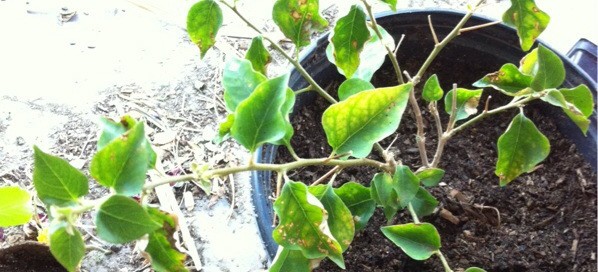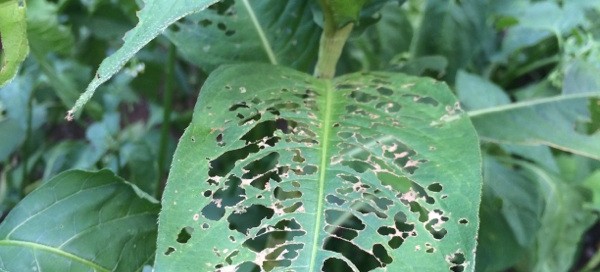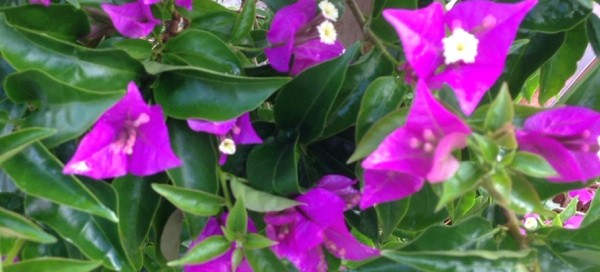Nutrient Or Water Issue
Its hard to say what's causing the spotting on your Bougainvillea leaves, but it could be either a nutrient issue and/or a water issue; they are inter-related. Its also possibly caused by root issues. These plants do not like to have their roots disturbed when transplanting, and are easily affected by this process. If you've had this plant in the pot for awhile, that's obviously not part of the problem, but if it was recently moved to this pot, you may have to wait until the roots recover and begin to take up water & nutrients properly. Otherwise, this plant needs regular water (to keep the soil evenly moist) when growing in a pot. If water is not sufficient, it won't be able to get the dissolved nutrients normally taken up with water (if the nutrients exist in the soil). If you have not fertilized in the recent past, we recommend you apply a slow release tree/shrub fertilizer and mix into the soil well (without disturbing the roots). Continue to water as necessary to keep the soil evenly moist (but not wet)!








